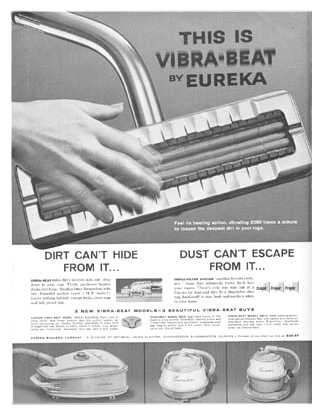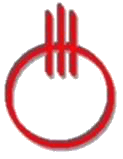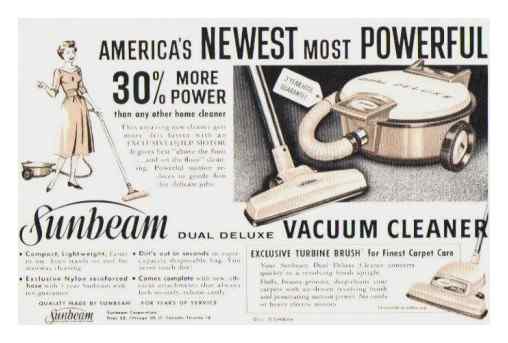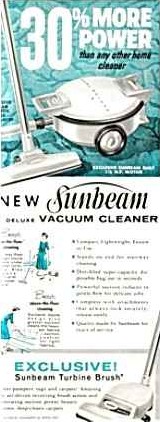Turbo Tools: Air Powered Accessories
Turbo tools are attachments with air turbine motors, driven by either the suction or the exhaust of your vacuum cleaner.
One of the earliest known (to me, at least) air powered attachments is a design patented by Electrolux that used an air powered piston to beat the dust out of the rug.
 Thead on the left shows a similar attachment sold by Eureka in thelate 1950's, the Vibra-Beat. Itis believed to be nearly identical to the Electrolux design, thoughmade with a plastic housing.
Thead on the left shows a similar attachment sold by Eureka in thelate 1950's, the Vibra-Beat. Itis believed to be nearly identical to the Electrolux design, thoughmade with a plastic housing.
Insidethe nozzle was a piston attached to a "foot" that was pressed down by aspring. It is not known to me if this nozzle even made it intoproduction, but if it was it would be a real treat for any collector.
Thesuction of the vacuum cleaner would lift the piston up to a point untilit cleared a valve that released pressure. The spring inside pushed thepiston back down, beating the carpet. The whole process repeated at ahigh rate of speed and must have made quite a clamor!
TurboTools have not been very useful for actual cleaning because these toolsget their power from the airflow through the cleaner. If the dust bagis full of dirt, then the airflow is reduced to a level too low for the tool to be useful.




 The Singer Company also offered a Revolving BrushAttachment (Right) sold with their "Roll-A-Magic" and Golden Glide Canister vacuums.
The Singer Company also offered a Revolving BrushAttachment (Right) sold with their "Roll-A-Magic" and Golden Glide Canister vacuums.